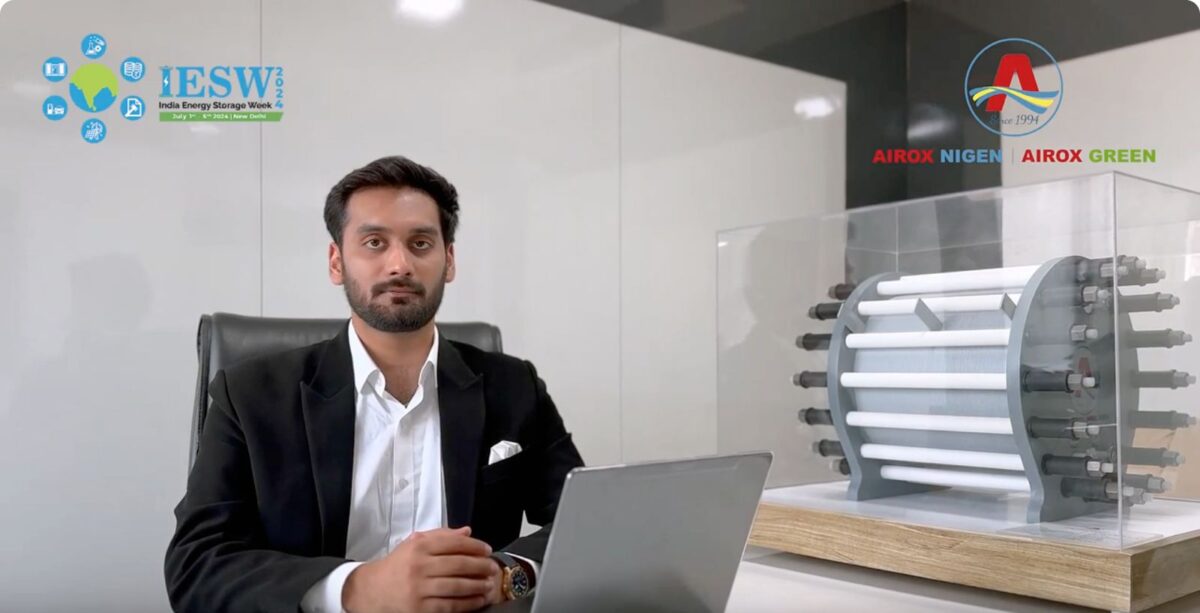Green hydrogen is increasingly recognized as a pivotal solution in the global transition to sustainable energy. However, one of the primary challenges hindering its widespread adoption has been its cost. Fortunately, advancements in electrolyser technology are rapidly driving down the costs associated with green hydrogen production, making it a more viable and attractive option for industries and governments worldwide.
Electrolysers are devices that use electricity to split water into hydrogen and oxygen. When the electricity used is derived from renewable sources such as wind, solar, or hydroelectric power, the hydrogen produced is termed “green hydrogen.” This process is central to the sustainability of green hydrogen, as it ensures the entire production chain is free from carbon emissions.
The cost-effectiveness of green hydrogen hinges on the efficiency and scalability of electrolysers. Historically, the high cost of electrolysers and the electricity required for water electrolysis have been significant barriers. However, recent technological innovations are addressing these challenges.
Key innovations
Advances in materials science
Electrode Materials: The development of advanced electrode materials, such as nickel-based alloys and platinum group metals, has significantly improved the efficiency of electrolysis. These materials reduce the overpotential required for electrolysis, leading to lower energy consumption and cost.
Membrane Technology: The adoption of proton exchange membranes (PEMs) and alkaline exchange membranes (AEMs) has enhanced the durability and efficiency of electrolysers. These membranes allow for the production of high-purity hydrogen at lower operational costs.
Modular design and scalability
Modular Electrolysers: Recent innovations have led to the development of modular electrolyser units that can be easily scaled up or down depending on the required hydrogen output. This flexibility reduces the initial capital expenditure and allows for gradual expansion of production capacity as demand grows.
Large-Scale Electrolysis: Companies are now deploying large-scale electrolysis plants with capacities in the hundreds of megawatts, significantly reducing the cost per kilogram of hydrogen produced.
Integration with renewable energy sources
Dynamic Operation: Modern electrolysers are being designed to operate dynamically, meaning they can ramp up or down in response to the availability of renewable energy. This integration maximizes the utilization of renewable power and reduces the overall cost of hydrogen production.
Off-Grid Solutions: Some innovations focus on coupling electrolysers directly with off-grid renewable energy sources, such as remote solar or wind farms. This approach eliminates the need for expensive grid connections and minimizes transmission losses.
Digitalization and automation
Advanced control systems: The incorporation of AI-driven control systems and IoT-enabled monitoring has optimized the operational efficiency of electrolysers. These systems allow for real-time adjustments, predictive maintenance, and improved overall performance.
Automation: Automated manufacturing processes for electrolyser components are reducing production costs and improving the consistency and reliability of these systems.
Impact on green hydrogen affordability
According to a 2022 report by the International Renewable Energy Agency (IRENA), the cost of green hydrogen production could drop by up to 60% by 2030 due to advancements in electrolyser technology and the decreasing costs of renewable electricity. The report estimates that the cost could fall to as low as $1.50 per kilogram, making green hydrogen competitive with fossil fuel-based hydrogen (grey and blue hydrogen).
Moreover, the Hydrogen Council’s 2023 report highlights that over 500 large-scale hydrogen projects have been announced worldwide, with an estimated investment of $500 billion by 2030. These projects are expected to accelerate the commercialization of green hydrogen and drive further cost reductions.
Innovations in electrolyser technology are fundamentally altering the economics of green hydrogen production. As these technologies continue to evolve, the cost of green hydrogen is expected to decrease significantly, making it a cornerstone of the global shift towards sustainable energy. The combination of advanced materials, scalable designs, integration with renewable energy, and digitalization is paving the way for green hydrogen to become an affordable and ubiquitous energy source, crucial for achieving net-zero emissions and combating climate change.
As more countries and industries commit to decarbonization, the role of green hydrogen, enabled by these technological breakthroughs, will only become more prominent. The future of energy is green, and hydrogen is at the heart of this transformation.
The views and opinions expressed in this article are the author’s own, and do not necessarily reflect those held by pv magazine.
This content is protected by copyright and may not be reused. If you want to cooperate with us and would like to reuse some of our content, please contact: editors@pv-magazine.com.








By submitting this form you agree to pv magazine using your data for the purposes of publishing your comment.
Your personal data will only be disclosed or otherwise transmitted to third parties for the purposes of spam filtering or if this is necessary for technical maintenance of the website. Any other transfer to third parties will not take place unless this is justified on the basis of applicable data protection regulations or if pv magazine is legally obliged to do so.
You may revoke this consent at any time with effect for the future, in which case your personal data will be deleted immediately. Otherwise, your data will be deleted if pv magazine has processed your request or the purpose of data storage is fulfilled.
Further information on data privacy can be found in our Data Protection Policy.